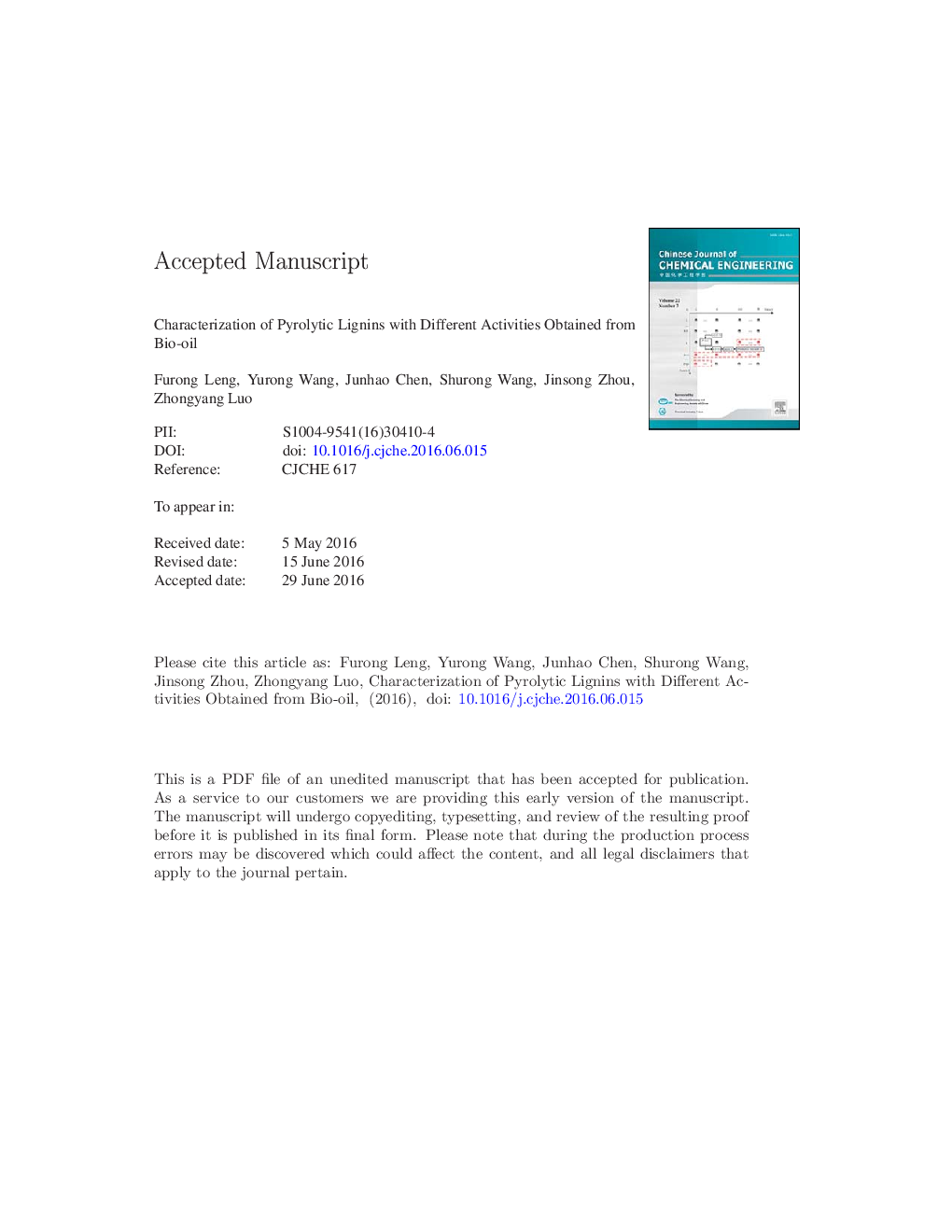| Article ID | Journal | Published Year | Pages | File Type |
|---|---|---|---|---|
| 4764267 | Chinese Journal of Chemical Engineering | 2017 | 21 Pages |
Abstract
Pyrolytic lignin, the water-insoluble fraction in bio-oil, often shows a high content and has strong intermolecular interactions with other compounds in bio-oil. In order to obtain pure pyrolytic lignin and facilitate the utilization of aqueous phase obtained from water extraction of bio-oil, methanol-water extraction method was employed to further separate the bio-oil water-insoluble phase in this paper. Different technologies, including Fourier transform infrared spectroscopy, gel permeation chromatography, and nuclear magnetic resonance, were adopted to characterize the structures of pyrolytic lignins with different activities obtained through this method. Both the heating value and the polymerization degree of high-molecular-weight pyrolytic lignin were higher than those of low-molecular-weight pyrolytic lignin. The molecular weight distribution of high-molecular-weight pyrolytic lignin was relatively wider, among which the contents of dimers to pentamers all accounted for 12%Â -18%, while the low-molecular-weight pyrolytic lignin mainly consisted of trimers (75.38%). The pyrolytic lignins had similar basic structures, both of which contained syringyl and guaiacyl units, whereas the low-molecular-weight pyrolytic lignin had more abundant syringyl units, reactive carbonyl groups and hydroxyl groups. Meanwhile, thermogravimetric study revealed that the final char residue yield of low-molecular-weight pyrolytic lignin was lower than that of high-molecular-weight pyrolytic lignin.
Related Topics
Physical Sciences and Engineering
Chemical Engineering
Chemical Engineering (General)
Authors
Furong Leng, Yurong Wang, Junhao Chen, Shurong Wang, Jinsong Zhou, Zhongyang Luo,
